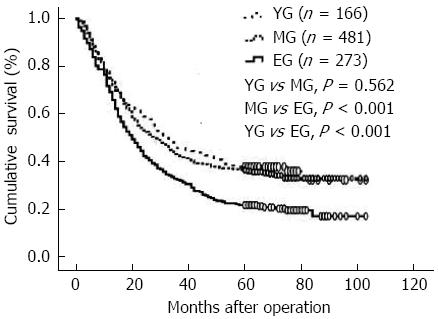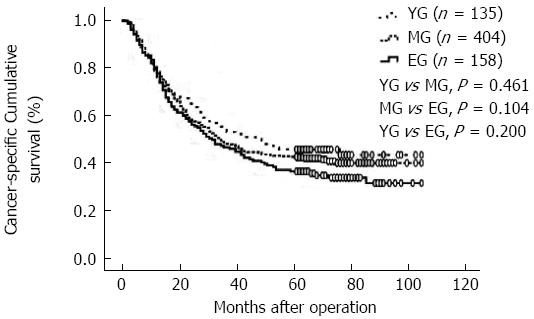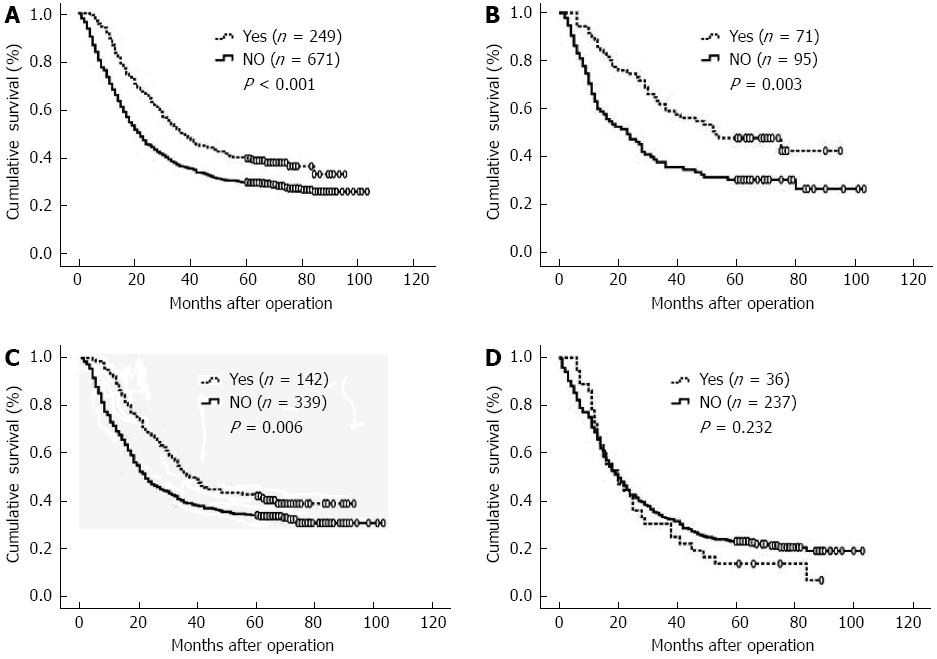Copyright
©2013 Baishideng Publishing Group Co.
World J Gastroenterol. Oct 21, 2013; 19(39): 6568-6578
Published online Oct 21, 2013. doi: 10.3748/wjg.v19.i39.6568
Published online Oct 21, 2013. doi: 10.3748/wjg.v19.i39.6568
Figure 1 Overall survival curves for all patients grouped by age.
Patients aged ≥ 70 years demonstrated a significantly lower 5-year OS rate than the younger and middle-aged patients (elderly vs middle-aged vs younger patients, 22.0% vs 36.6% vs 38.0%, respectively). EG: Elderly group; MG: Middle-aged group; YG: Younger group.
Figure 2 Overall survival curves for patients with tumor–node–metastasis II and III cancer.
In the tumor-node-metastasis (TNM)-stratified analysis, the differences in overall survival (OS) were only observed in patients with TNM stage II and III cancer. A: Patients with II cancer; B: Patients with III cancer. EG: Elderly group; MG: Middle-aged group; YG: Younger group.
Figure 3 Cancer-specific survival of each age group.
When deaths caused by factors other than gastric cancer were excluded, there were no significant differences in cancer-specific survival among the three age groups. EG: Elderly group; MG: Middle-aged group; YG: Younger group.
Figure 4 Overall survival curves for patients grouped by chemotherapy.
In the age-stratified analysis, chemotherapy was a prognostic factor for the younger and middle-aged patients, but not for the elderly patients. A: All patients; B: Younger group; C: Middle-aged group; D: Elderly group.
- Citation: Liang YX, Deng JY, Guo HH, Ding XW, Wang XN, Wang BG, Zhang L, Liang H. Characteristics and prognosis of gastric cancer in patients aged ≥ 70 years. World J Gastroenterol 2013; 19(39): 6568-6578
- URL: https://www.wjgnet.com/1007-9327/full/v19/i39/6568.htm
- DOI: https://dx.doi.org/10.3748/wjg.v19.i39.6568












